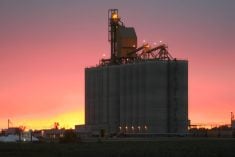It happens, right? You literally fall asleep on the job. You’re totally exhausted — with too much to do and too little time to do it. Some farmers make a joke of it. Others actually brag about how little sleep they get during seeding, spraying and harvesting — pretty much all the production season. Their families and friends don’t think it’s so funny.
They’re the ones who are trying to live with a bear who’s putting everyone and everything at risk. It’s not cool. It’s not good business. And it’s not necessary.
Read Also

Cancer agency reclassifies another herbicide ‘probably carcinogenic’
The WHO’s cancer research agency has now put atrazine, a herbicide well known to corn growers, in the same potential-hazard category where the agency put glyphosate.
At least that’s what sleep researcher Jon Shearer always said. This Sarnia, Ont. consultant who passed away last year, had first-hand experience with sleep deprivation as a former shift worker and Carleton University sleep researcher. He is featured on a just-released DVD “Sleepless in Saskatchewan” now available at www.cchsa-ccssma.usask.ca/ahsn/index.php.
In it, Shearer says we all need to understand our sleep patterns and make them work for us. Even farmers. Especially farmers. And the good news is he says we all need quality sleep, not necessarily more sleep. The bad news is when you miss that quality sleep, it’s gone. You can’t ever catch up.
And that’s what happens too often on the farm. Shearer explains that all of us need to cycle through pre-sleep, four stages of sleep plus REM — Rapid Eye Movement or dreaming sleep. This sleep cycle takes about 90 minutes. If the stages are interrupted, Shearer says you’ll likely wake up feeling as though you didn’t sleep a wink all night.
Here’s what’s happening. First, all of us go through what Shearer calls the Hynagogic period –better known as the time for pre-sleep rituals — a glass of warm milk, a shower, a couple of paragraphs of that bedside book you’ve been rereading for the past three months. Then:
Stage 1: It’s over in five or 10 minutes and sometimes when you’re in this stage, you’ll swear you are really awake. You’ll look to everyone else as though you’re sawing zzz but you’re aware of changes in your surroundings and would wake up if someone in the room attempted to change the television channel.
Stage 2: This stage is often referred to as “thinking” or “napping” sleep. During the early periods of this stage, you might recall hearing voices, seeing flashes of colour, or have a dream-like sensation of falling. If you have ever had the experience of feeling that you haven’t slept all night; that all you did was think, think, think –you were actually thinking in your sleep!
Stage 3/4: Most sleep scientists agree this stage is considered core sleep. If you’re disturbed during this stage, you’ll actually suffer physically. At the very least, shift workers who experience fragmented Stage 3/4 sleep complain of muscular aches and pains and an almost debilitating level of fatigue.
REM Sleep: This is what most of us know as dreaming sleep, although Shearer says it’s likely we dream all night long and just remember REM dreams better. This sleep seems to refresh us. If it’s cut short, watch out for “cranky boots!”
Here’s the crunch. To get to Stage 4, you have to go through Stages 1 and 2 and if you are disturbed, you have to start all over again. So it’s important to complete the full 90-minute cycle of sleep. During a 7- hour nighttime sleep, you would ideally cycle about five times.
How little sleep can you get away with when you’re super busy on the farm? Shearer doesn’t say but if you check his charts and work through his example score sheets, you might be able to get an idea of what will work for you.
Check it out at the Canadian Centre of Health and Safety in Agriculture http://www.cchsaccssma.usask.ca/ahsn/index.php or call (306) 966-6643. This new DVD was supported financially by the Canadian Agricultural Safety Association through Agriculture and Agri-Food Canada’s Growing Forward initiative, The Canadian Centre for Health and Safety in Agriculture at the University of Saskatchewan, and the Saskatchewan Ministry of Agriculture.














